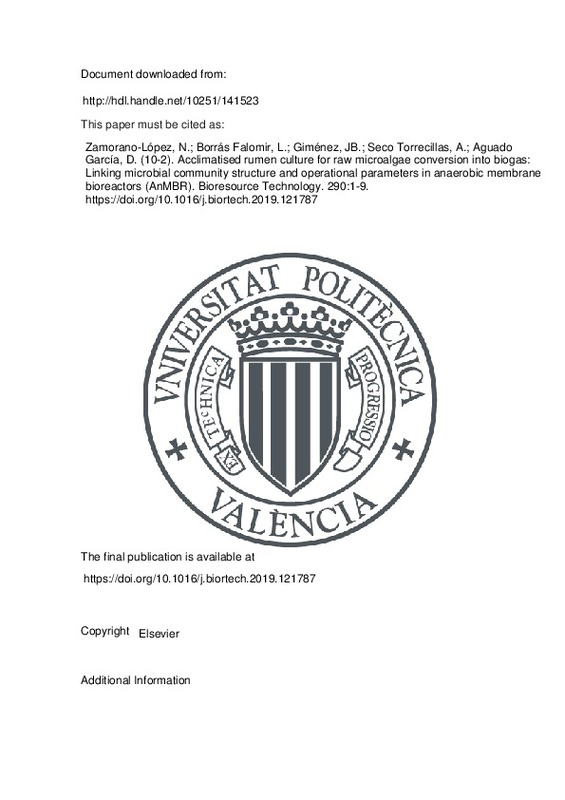JavaScript is disabled for your browser. Some features of this site may not work without it.
Buscar en RiuNet
Listar
Mi cuenta
Estadísticas
Ayuda RiuNet
Admin. UPV
Acclimatised rumen culture for raw microalgae conversion into biogas: Linking microbial community structure and operational parameters in anaerobic membrane bioreactors (AnMBR)
Mostrar el registro completo del ítem
Zamorano-López, N.; Borrás Falomir, L.; Giménez, JB.; Seco Torrecillas, A.; Aguado García, D. (2019). Acclimatised rumen culture for raw microalgae conversion into biogas: Linking microbial community structure and operational parameters in anaerobic membrane bioreactors (AnMBR). Bioresource Technology. 290:1-9. https://doi.org/10.1016/j.biortech.2019.121787
Por favor, use este identificador para citar o enlazar este ítem: http://hdl.handle.net/10251/141523
Ficheros en el ítem
Metadatos del ítem
| Título: | Acclimatised rumen culture for raw microalgae conversion into biogas: Linking microbial community structure and operational parameters in anaerobic membrane bioreactors (AnMBR) | |
| Autor: | Zamorano-López, Núria Borrás Falomir, Luis GIMÉNEZ, JUAN B. SECO TORRECILLAS, AURORA | |
| Entidad UPV: |
|
|
| Fecha difusión: |
|
|
| Resumen: |
[EN] Ruminal fluid was inoculated in an Anaerobic Membrane Reactor (AnMBR) to produce biogas from raw Scenedesmus. This work explores the microbial ecology of the system during stable operation at different solids retention ...[+]
|
|
| Palabras clave: |
|
|
| Derechos de uso: | Reserva de todos los derechos | |
| Fuente: |
|
|
| DOI: |
|
|
| Editorial: |
|
|
| Versión del editor: | https://doi.org/10.1016/j.biortech.2019.121787 | |
| Código del Proyecto: |
|
|
| Agradecimientos: |
This research work has been supported by the Spanish Ministry of Economy and Competitiveness (MINECO, Projects CTM2011-28595-C02-01 and CTM2011-28595-C02-02), which is gratefully acknowledged. The Education, Investigation, ...[+]
|
|
| Tipo: |
|







![[Cerrado]](/themes/UPV/images/candado.png)


